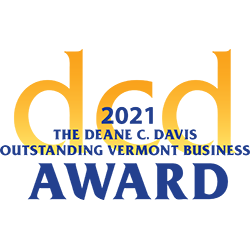Cheese Department Fall Farm Trips
We were recently lucky enough to visit two local cheesemakers, both relative newcomers to the world of Vermont farmstead cheese, but both doing a wonderful job of creating and successfully selling fantastic cheeses! (So successful, in fact, that there weren’t any samples available for us on our tours! But we forgave them, of course.) Along with our marketing team, we sought out Sage Farm and Von Trapp Farmstead to get the inside scoop.
First, we traveled to Stowe and Sage Farm, a 27-acre farm & creamery run by the sister team of Molly & Katie Pindell. We were greeted by Molly’s husband and son, one of whom- we won’t say which- had a face covered with the evidence of a recent blueberry binge, and quickly turned over to Molly, who led us straight to the stars of the farm: the Alpine goats. 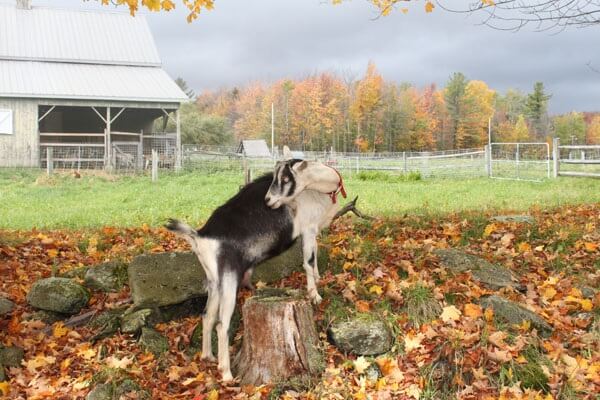
Since it is currently breeding season, we actually traipsed across the farm and back to see all the goats because they were separated into pens based not only on age but also on their pregnancy progress. The goats greeted us, watched us, came up to be pet and fed by us- the farm is rolling with apples- and bleated “good-bye” to us when we left. Or, maybe it was “hey, I wanted more apples” but it sounded like a farewell. 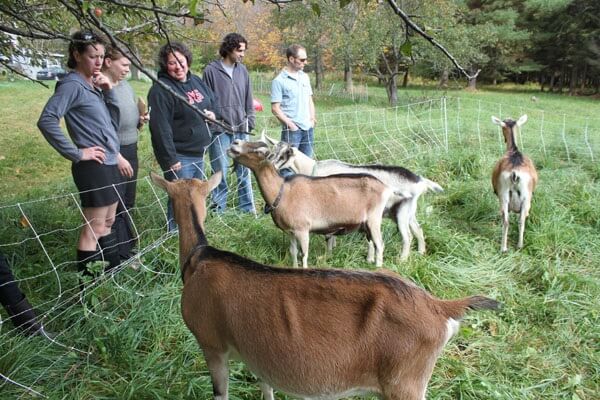

Currently, the goats range in age from 6 years (the matriarch, Christy) to 6 months, and the farmers devised a naming scheme to keep the years distinct; one year the goats were named with Shakespearean characters, such as Ophelia, another year it was plants, Sorrel for example, etc.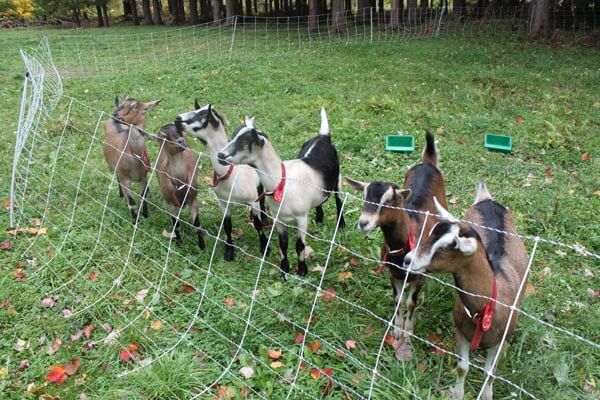
Currently, there are 25 goats on the farm including 15 ‘milkers’ whose milk eventually becomes the delicate yet wholesome bloomy rind cheeses we sell in our store*. Their goats get milked from March/April until Christmastime, and we got to follow the path of the milk with a tour of the cheesemaking operations. 
From their small milking parlor, we went to the not-much-larger collection room which houses their 50-gallon bulk tank. If you don’t know, this is a really small bulk tank in the world of cheese. However, as Molly informed us, it’s a big improvement from their former system of milk cans in a cooler! When it’s ready to be turned into cheese, the milk gets transferred in buckets to the cheesemaking room, pasteurized, poured into the vat, and inoculated with cultures at night to be ready for cutting, molding, and draining the next morning. After being drained for a full day, the little wheels called Madonna are salted, the little pyramids called Sterling are salted and rubbed with ash, and then they’re all aged for two weeks.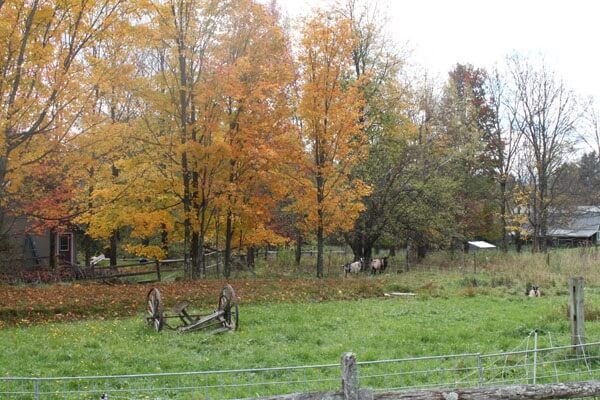
Our tour was short and sweet, and really, simply picturesque! Sage Farm is one example of the many small Vermont cheesemakers who start with gorgeous, fertile land, a love for animals combined with an environmental ethic, and the gumption to figure things out as they go along and make it work! With only 3 actual employees and 15 milking goats, this creamery is producing some stunningly consistent incredible cheeses and we’re happy to carry their products!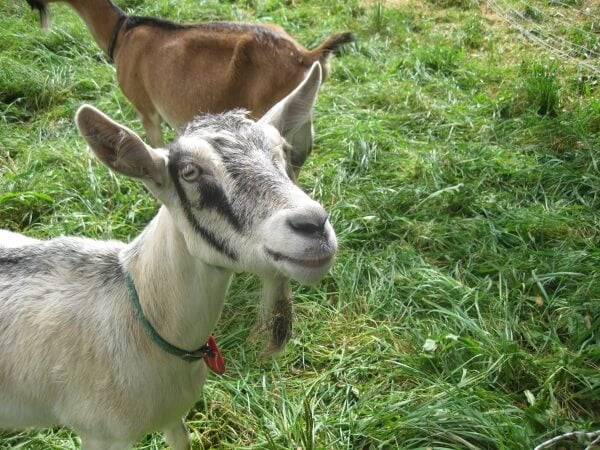
*Sage Farm also makes a semi-firm cheese called Worcester Tomme, a Chèvre, and a Feta, but these are only available at Farmers’ Markets.
Our next, and final, stop was the Von Trapp Farmstead in Waitsfield. Most likely, you’ve heard of the Von Trapp family from “The Sound of Music” but their cheeses have proven to be so popular you might just know the name because of a little wheel called Oma, or maybe even Mt Alice.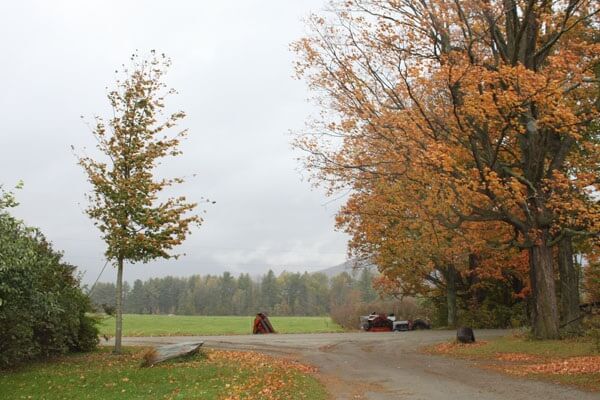
Cheesemaker Sebastian Von Trapp has been making decadent-yet-approachable cheese since 2009 on the 80-acre organic farm originally bought by his parents in 1959. Of course, at that time, the term ‘organic’ didn’t mean what it does today, but since 2006 the dairy farm has been certified and a proud member of the Organic Valley Co-op. On the day we visited, Sebastian had just finished a batch of Oma, the farm’s semi-soft washed rind cheese that’s aged at the Cellars at Jasper Hill, and he kindly took us back to the beginning of the process so we could ‘follow the milk’.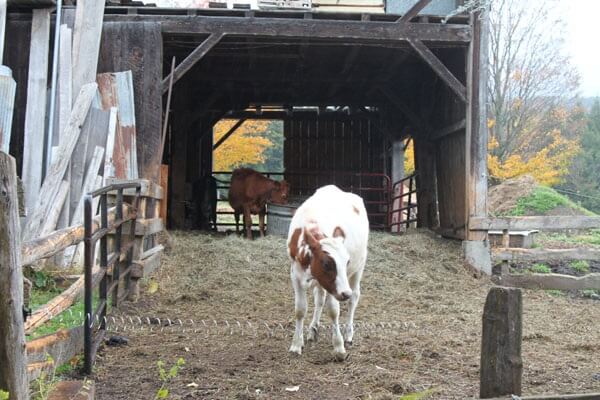
Maddie the dog greeted us as we entered the barn to see where 50 milking cows get milked everyday, each cow using her own spot reserved with a nameplate. We were told that about 25% of the milk goes to Organic Valley and the remaining 75% gets used in cheesemaking, which happens about every other day (accomplished by a total of only four employees). Almost half of the makes are Oma, just like the day we visited, about one quarter are Mt. Alice, a camembert-style cheese, and the remainder is split between Mad River Blue and- get excited now- a brand new cheese called Savage!
The milk is pumped to the bulk tank and from there to the vat/pasteurizer. At this point, we entered the lab & production area and were all impressed at how lovely and well-built the building was. Sebastian explained that his brother, Dan, and he had custom-built it together and we were to find out soon just how many cool and efficient tricks they had up their sleeves. After we donned clean rubber boots, we entered to see clever trick #1: the 1500-liter vat sitting up on a platform. The vat is up so high that it makes draining and molding a lot easier and more efficient, using gravity instead of bending over with scoops to get the curds to the molds. Brilliant! 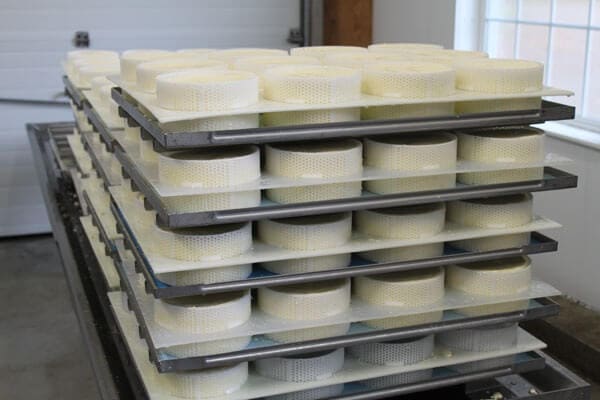
Near the vat, the freshly-made wheels of Oma were waiting to be turned over and taken to the brine tubs in the basement, which is when we learned about clever trick #2: a trap door in the floor which allows for a dumbwaiter-style contraption to lower all the wheels into the basement at once. Ingenious! Both Oma and Mt. Alice get the brine treatment for a few hours (Savage is direct-salted) before heading to the aging room. 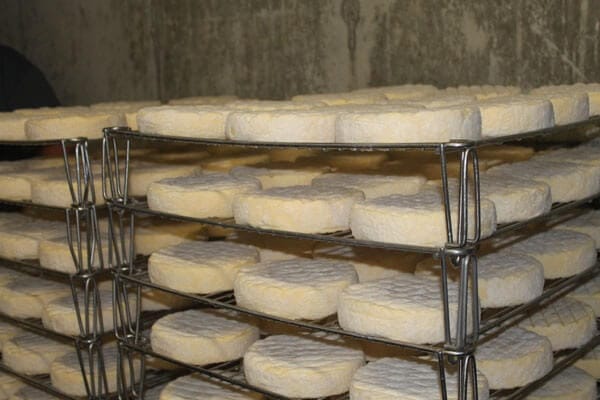
In that room, we saw wheels of Mt. Alice all wrapped up and ready to go, wheels of Savage aging away, and wheels of Mad River Blue in a lovely age progression, transitioning from a pale yellow with just a few spots of mold to full-on mold development.
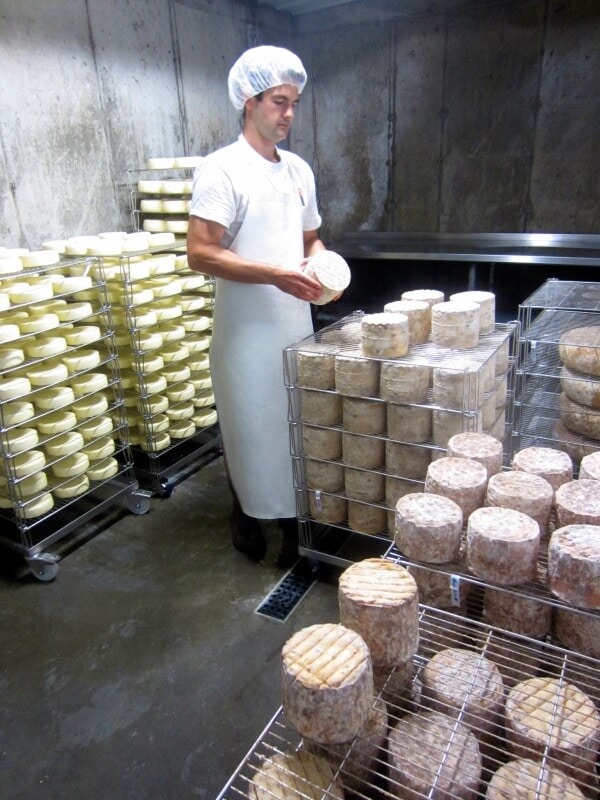
Once these wheels are ready, they head to clever trick #3: an elevator used to deliver the wheels back upstairs to a spot perfectly aligned with the delivery truck parking. Nifty!
The Von Trapps’ decision to make value-added products in the midst of difficult dairy industry times is another classic Vermont cheesemaker story, and everything points to it being a savvy and well thought-out decision. Though Sebastian has only been at this for a few years now, his organic cheeses have an extraordinarily strong following and we are delighted to know that he’s adding to his collection! Hopefully, we’ll get to try some of the Savage soon!


